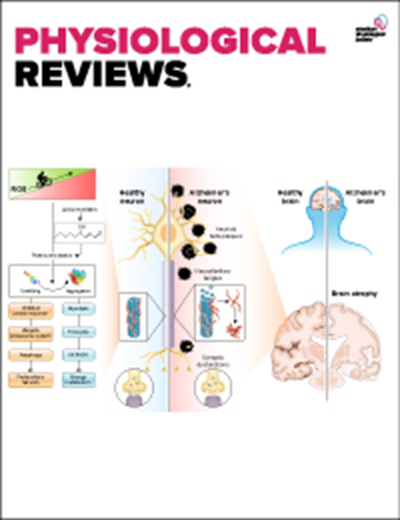Cysteine-based redox sensors in the cardiovascular system - from identification to physiology and drug discovery.
IF 28.7
1区 医学
Q1 PHYSIOLOGY
引用次数: 0
Abstract
Cysteine residues are uniquely equipped to sense redox signals due to the reactivity of their thiol side chains, which can undergo oxidation to form various modifications. By sensing changes within the intracellular redox environment reactive cysteine thiols add a distinct shape and a charge characteristic that can induce protein conformational changes, ultimately triggering specific effector responses that alter cellular and tissue function. Redox sensing is essential within the cardiovascular system, where it regulates both cardiac and vascular function and significantly influences disease progression. This review provides a brief introduction to cysteine thiol redox sensors, outlines methodologies for their detection, and explores their roles in the cardiovascular system. Also discussed are recent advancements in identifying cysteine-targeted therapies and a proposal for a redefined perspective on the role of redox biology within the cardiovascular system.心血管系统中基于半胱氨酸的氧化还原传感器——从鉴定到生理学和药物发现。
由于巯基侧链的反应性,半胱氨酸残基具有独特的感应氧化还原信号的能力,巯基侧链可以经过氧化形成各种修饰。通过感知细胞内氧化还原环境的变化,活性半胱氨酸硫醇增加了独特的形状和电荷特征,可以诱导蛋白质构象变化,最终触发改变细胞和组织功能的特定效应反应。氧化还原感应在心血管系统中是必不可少的,它调节心脏和血管功能并显着影响疾病进展。本文简要介绍了半胱氨酸硫醇氧化还原传感器,概述了它们的检测方法,并探讨了它们在心血管系统中的作用。还讨论了最近在确定半胱氨酸靶向治疗方面的进展,并提出了重新定义氧化还原生物学在心血管系统中的作用的观点。
本文章由计算机程序翻译,如有差异,请以英文原文为准。
求助全文
约1分钟内获得全文
求助全文
来源期刊

Physiological reviews
医学-生理学
CiteScore
56.50
自引率
0.90%
发文量
53
期刊介绍:
Physiological Reviews is a highly regarded journal that covers timely issues in physiological and biomedical sciences. It is targeted towards physiologists, neuroscientists, cell biologists, biophysicists, and clinicians with a special interest in pathophysiology. The journal has an ISSN of 0031-9333 for print and 1522-1210 for online versions. It has a unique publishing frequency where articles are published individually, but regular quarterly issues are also released in January, April, July, and October. The articles in this journal provide state-of-the-art and comprehensive coverage of various topics. They are valuable for teaching and research purposes as they offer interesting and clearly written updates on important new developments. Physiological Reviews holds a prominent position in the scientific community and consistently ranks as the most impactful journal in the field of physiology.
 求助内容:
求助内容: 应助结果提醒方式:
应助结果提醒方式:


